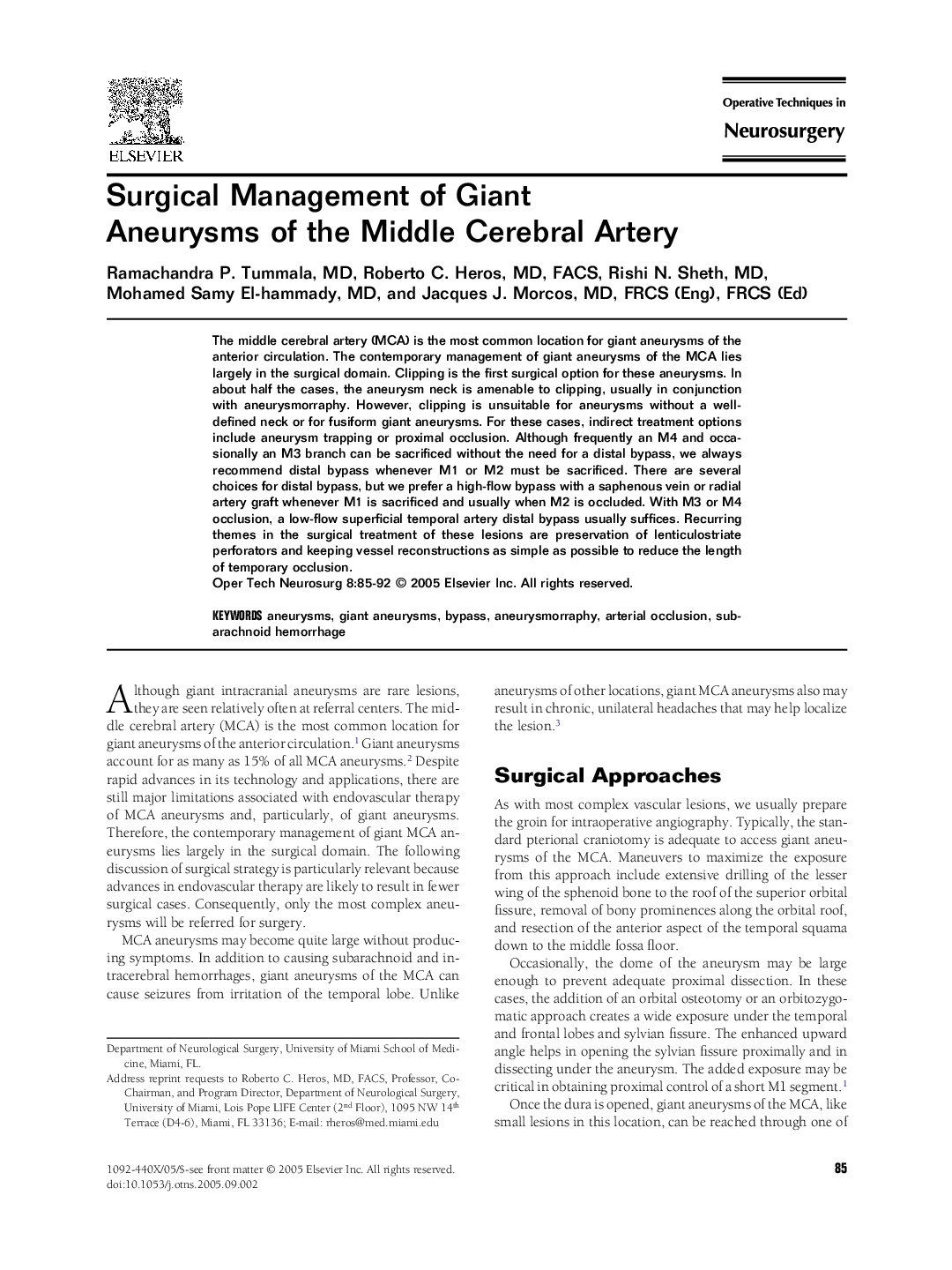| Article ID | Journal | Published Year | Pages | File Type |
|---|---|---|---|---|
| 9201509 | Operative Techniques in Neurosurgery | 2005 | 8 Pages |
Abstract
The middle cerebral artery (MCA) is the most common location for giant aneurysms of the anterior circulation. The contemporary management of giant aneurysms of the MCA lies largely in the surgical domain. Clipping is the first surgical option for these aneurysms. In about half the cases, the aneurysm neck is amenable to clipping, usually in conjunction with aneurysmorraphy. However, clipping is unsuitable for aneurysms without a well-defined neck or for fusiform giant aneurysms. For these cases, indirect treatment options include aneurysm trapping or proximal occlusion. Although frequently an M4 and occasionally an M3 branch can be sacrificed without the need for a distal bypass, we always recommend distal bypass whenever M1 or M2 must be sacrificed. There are several choices for distal bypass, but we prefer a high-flow bypass with a saphenous vein or radial artery graft whenever M1 is sacrificed and usually when M2 is occluded. With M3 or M4 occlusion, a low-flow superficial temporal artery distal bypass usually suffices. Recurring themes in the surgical treatment of these lesions are preservation of lenticulostriate perforators and keeping vessel reconstructions as simple as possible to reduce the length of temporary occlusion.
Related Topics
Health Sciences
Medicine and Dentistry
Clinical Neurology
Authors
Ramachandra P. MD, Roberto C. (FACS), Rishi N. MD, Mohamed Samy MD, Jacques J. (FRCS (Eng), FRCS (Ed)),
